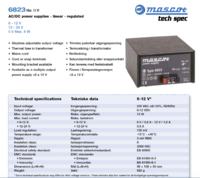KlausST
Advanced Member level 7

- Joined
- Apr 17, 2014
- Messages
- 26,277
- Helped
- 4,925
- Reputation
- 9,873
- Reaction score
- 5,796
- Trophy points
- 1,393
- Activity points
- 176,821
Hi,
Klaus
--> look at your distributor. Simply search for "electrolytic audio capacitor".Can you give me some specific recommendations regarding the audio type electrolytic capacitors and for the non polarized aswell?
R = Resistor, C = capacitor, HF = high frequency. --> No special brand. Try to use what you have by hand.Again, can you recommend some specific HF RC Filters? (A brand or something). Thanks a lot for your help
Klaus



